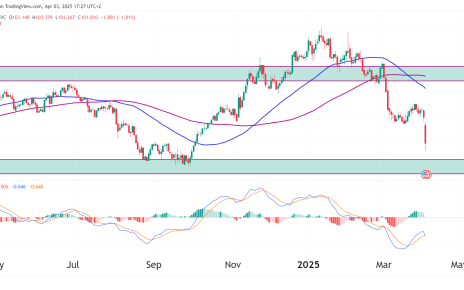- Interest futures soared after a successful Treasuries auction on Wednesday.
- Trump has announced higher tariffs on Brazil, Canada, Japan and South Korea.
- The FOMC minutes revealed that policymakers are more willing to cut rates later this year.
Interest futures eased from recent peaks after Trump got more aggressive with tariffs. Meanwhile, the dollar and Treasury yields rose in anticipation of higher import costs and inflation. Trump sent additional letters to countries like Canada, announcing higher tariffs that will take effect in August.
US 10-year yield (Source: Bloomberg)
On Wednesday, interest futures soared after a successful Treasuries auction. There was higher-than-expected demand for the US 10-year note on Wednesday. This indicated that investors were gradually returning to the US markets. As a result, Treasury yields dropped while the bond market soared.
Initially, when Trump started his aggressive policy changes, many investors had fled US assets. His tariffs threatened the stability of the US economy and hurt investor confidence. Consequently, Treasuries dropped and yields rose. However, he softened his stance and worked on ending trade wars by signing deals with key partners, such as the UK and China. This restored some confidence, boosting demand for US assets.
However, things are starting to take a different turn again. The 90-day pause on reciprocal tariffs has come to an end, and Trump is back with his threats. Already, the US president has announced a 50% tariff on Brazil, a 35% tariff on Canada, and a 25% tariff on Japan and South Korea. Meanwhile, he has promised to send a letter to the Eurozone by this Friday.
These moves have caused different reactions. Brazil has said it will retaliate if the tariffs take effect on August 1. Meanwhile, Japan and South Korea are more willing to continue negotiations, hoping for a deal before the new deadline. Nevertheless, this time, Trump is more lenient. Therefore, the impact on the financial markets has been muted. He is willing to give countries extensions beyond the August deadline to encourage negotiations.
Traders will continue to monitor these trade developments. An escalation in tensions could erode investors’ confidence, prompting them to seek safer assets in other countries.
Elsewhere, market participants paid attention to the FOMC policy meeting minutes released on Wednesday. The minutes revealed that policymakers are more willing to cut rates toward the end of the year. This was more dovish than they have been in recent months. The prospect of lower borrowing costs is bullish for interest futures.



